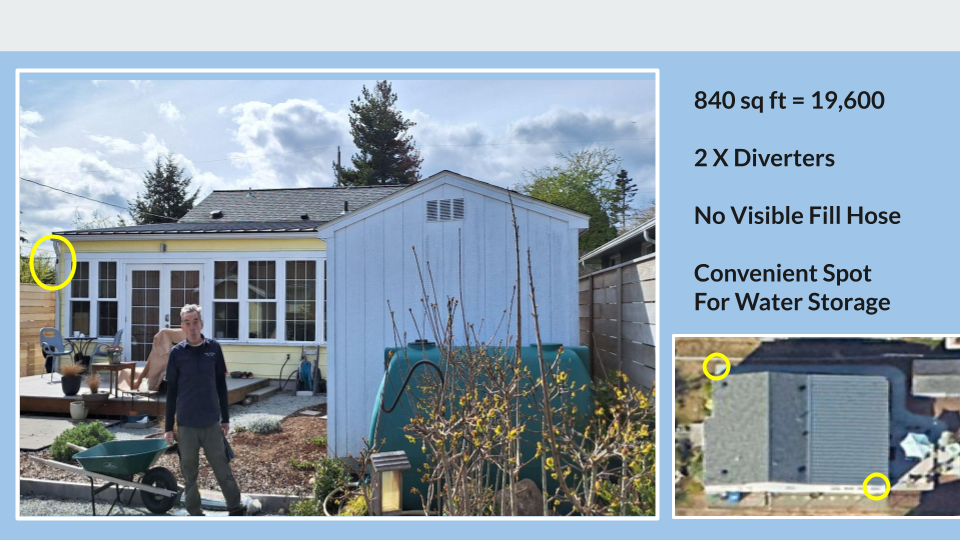Best Practices for Success
Embarking on a rainwater harvesting project is an exciting step towards sustainability and water independence. Following these best practices, you will create an efficient system maximizing your rainwater collection potential and enhancing your property’s overall water management.
Leveraging Gravity for Optimal System Design
Understanding the fundamental role of gravity in rainwater harvesting is crucial for creating an effective system. Redirecting water horizontally from gutters or downspout diverters, to the bottom of your rain tank, allows you to achieve greater flexibility in tank placement, choice and improved water management.
Strategic Tank Placement
When planning your rainwater harvesting system, consider the following factors for optimal tank placement:
Sizing Your System
A good rule of thumb is to aim for a 1000-gallon capacity to establish sufficient storage. This volume provides a solid foundation for water security and reduces reliance on municipal or well water sources.
Multiple Connections for Increased Efficiency
Implementing multiple connections from your roof area to the rain tank significantly improves your chances of collecting and storing a substantial amount of rainwater. This approach allows you to capture water from various parts of your roof, maximizing your harvesting potential[.
Integrating Your System into Your Landscape:
Consider planning your entire yard project around your rainwater harvesting system. This holistic approach allows you to create a cohesive design that incorporates water storage, usage areas, and landscaping elements seamlessly.
By following these best practices, you’ll be well on your way to creating an efficient and effective rainwater harvesting system. Remember, the key is to start with a solid plan that considers your specific needs and property characteristics. With careful planning and implementation, you can establish a valuable supplemental water source, develop water security, and reduce your reliance on traditional water supplies.

A raindrop tank hidden behind the shed in the garden providing fully accessible water and always prepared to capture 100 percent of the rainfall. The yellow circles represent downspout diverters located in front and back of the house

A raindrop tank located behind the detached garage in the garden area. New gutters were added to the garage for the first time preceding our project. This excellent planning created a valuable resource where the water was ignored for years accomplishing both water security and reduction in water bills while creating a pleasing environment.
